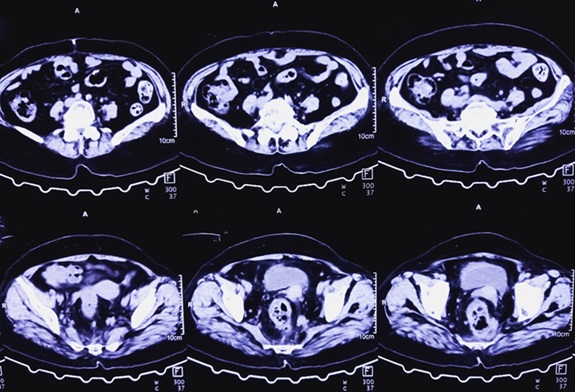New MRI Method “Lights Up” Pancreatic Cancer
Posted on 26 Jun 2024
Pancreatic cancer is notoriously difficult to detect early due to the pancreas's deep and variable position within the abdominal cavity, often allowing tumors to grow undetected until they are advanced. Researchers have now demonstrated a new magnetic resonance imaging (MRI) technique that could potentially make pancreatic tumors “light up” in MRI scans.
This novel MRI method, developed by scientists at the Weizmann Institute of Science (Rehovot, Israel), functions similarly to glucose tolerance tests used for diagnosing diabetes, by tracking how cells metabolize glucose. Otto Warburg identified nearly a century ago that tumors absorb and ferment glucose to lactate disproportionately—known as the Warburg effect. The Weizmann MRI technique leverages this effect to differentiate and visualize the specific metabolic products unique to cancer cells, potentially enabling earlier detection of pancreatic cancer.
.jpg)
Conventional MRI techniques struggle to clearly detect pancreatic tumors, as even with external contrast agents, the scans lack the specificity to pinpoint cancer presence and location. Commonly, abnormalities detected via MRI cannot be readily distinguished from inflammations or benign cysts. Similarly, positron emission tomography (PET) scans are unreliable, as positive results don't always confirm cancer, nor do negative results guarantee its absence. Routine pancreatic cancer screening involves CT and MRI scans, often coupled with invasive endoscopic biopsies, yet this method seldom proves effective. However, the Weizmann team believes that their MRI method could surpass traditional MRI or PET scans, which are generally ineffectual in identifying pancreatic tumors.
The innovative MRI approach employs a modified form of glucose infused with deuterium, a stable hydrogen isotope. When administered into the bloodstream of mice with aggressive pancreatic cancers, the deuterium MRI technique produced distinct images where deuterated lactate highlighted tumors brightly against a dark background, even at low concentrations. The team also demonstrated that this method is more sensitive than other MRI techniques that monitor only the final stage of glucose metabolism in cancer cells. Although these findings are currently limited to animal studies, there is potential for applying deuterium MRI in humans, promising improved early detection capabilities for pancreatic cancer. However, this method does not represent a cure for the disease.
“Future clinical studies, which we plan to start as soon as possible, could show that deuterium MRI is a lifesaving early-diagnosis modality for individuals possessing a genetic predisposition to this hideous disease,” said Prof. Lucio Frydman. “Even if the cancer is not caught in time, deuterium MRI will help measure rates at which the glucose-to-lactate conversion happens. This could provide a crucial metric for predicting the usefulness of certain treatments, or even determining whether a treatment is working. This could establish deuterium MRI as a preferred method for diagnosing hard-to-identify pancreatic tumors and choosing the treatment that will generate the best prognosis.”
Related Links:
Weizmann Institute of Science













